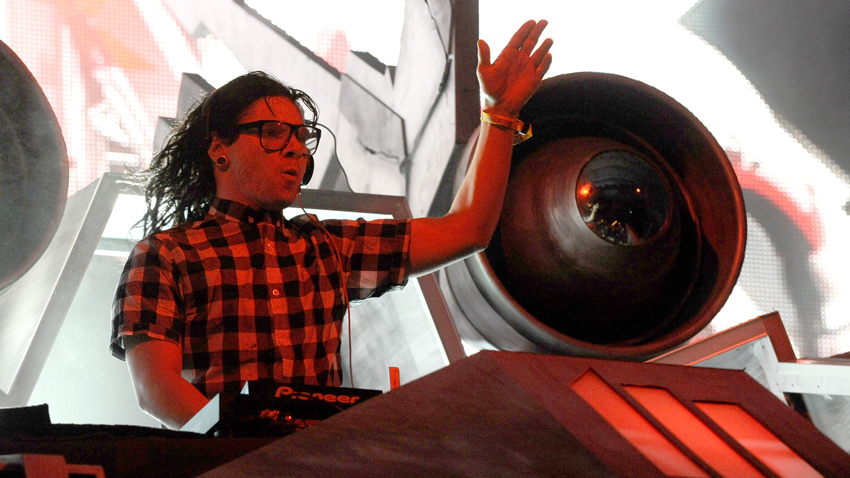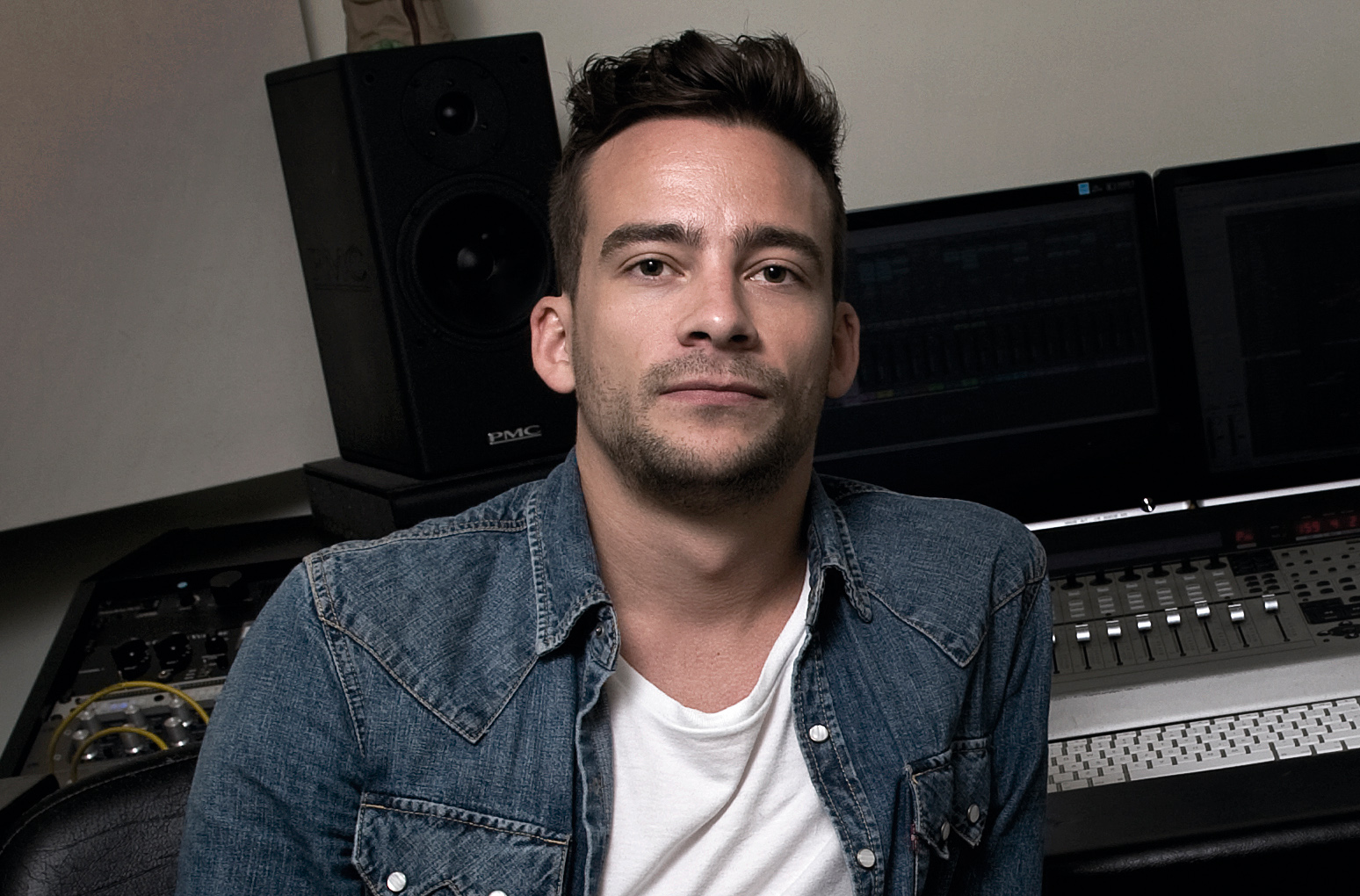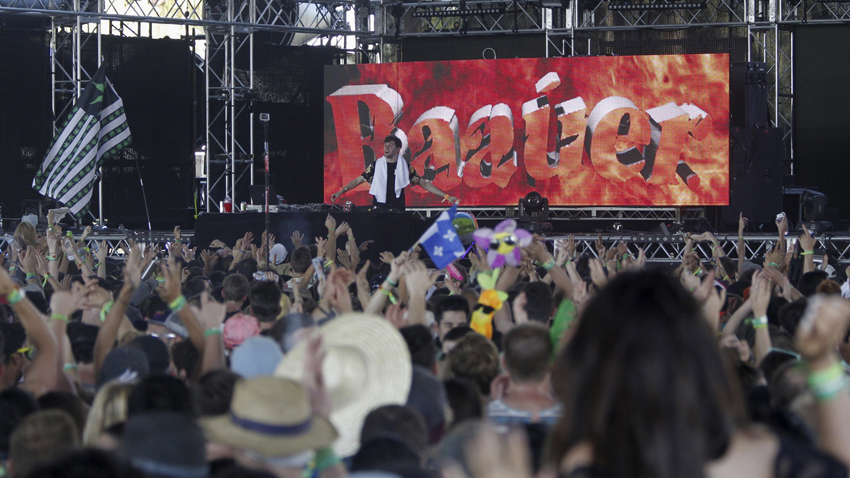What is bass music?
From drum 'n' bass to trap, we chart the rise of EDM's hottest genre

Most musicians hate being defined by labels and genres, but let's face it: without them, discovering new music that we actually like would be a long and very slow process.
God knows how many tracks are released each week, but imagine having to wade through every one of them trying to find something that suits your tastes, without these helpful (if often overly simplistic) categorisations to narrow things down.
The main problem seems to be that all those labels, genres and categories have an innate imprecision - a sort of aesthetic flexibility that allows them to be shrunk, stretched and twisted to fit each listener's personal taste. Were the Beatles rock or pop? Was Gil Scott Heron jazz or rap? Are the Prodigy rave, techno, breakbeat, electronic punk, industrial? You get the picture.
Despite being an integral part of the everyday experience of music consumption - relied on by record shops, record labels, radio stations and, of course, magazines and websites - genres are neither unconditional nor absolute. And nowhere is this more obvious and troublesome than in the realm of electronic dance music.
Over time, all musical genres will fragment, fuse and grow to form new styles, but dance music seems to have embarked on a ceaseless, restive quest for the 'brand new sound'. Maybe it's because dance music is so closely linked to and guided by ever-developing and increasingly available technology, or maybe it's because dance music producers, DJs and listeners are a naturally inquisitive and easily bored bunch, but the pace of change and development has barely slackened since the days of the Atari and the Akai S950.
If anything, it's accelerating. Just look at the last few years. The huge dubstep explosion in the US; the glitch craze; Chase & Status appearing on the bill at the annual heavy metal fest, Download; an article on Baauer's Harlem Shake in the The Sun; and the almost weekly emergence of boundary-breaking, cross-fertilised tunes that are taking dance music into previously undiscovered territories.
Complextro, moombahton, moombahcore, post-dubstep, future garage, afro-bass, drumstep, trap, trapstep, brostep, metalstep… the list is dazzlingly varied and occasionally bizarre, but it's here, in the midst of this mass of mixed-up modern noise, that we'll find bass music.
Get the MusicRadar Newsletter
Want all the hottest music and gear news, reviews, deals, features and more, direct to your inbox? Sign up here.
Definition indecision
As you can imagine, any sound that is born out of such madness will be almost impossible to pin down. If even the most commonplace genres like rock and pop require a little 'aesthetic flexibility', then where does that leave bass music? How can we define something that has put down its meandering roots in such a vast musical landscape?
"If you asked 50 people, 'What is bass music?', you would probably get 50 different answers," says Ben Hall, one half of UK production/remix/DJ duo Delta Heavy. "I suppose you could see it as an umbrella term to cover lots of different forms of dance music all being held together - and this might seem very obvious - by the predominance of bass.
"Over the last couple of years, the number of different sounds and styles of bass-related music that you could hear on the dancefloor has been growing so fast that I guess the industry started looking for something - a name - that could cover all bases.
"If you asked 50 people, 'What is bass music?', you would probably get 50 different answers." Ben Hall, Delta Heavy
"Some people were definitely getting confused by the different genres and BPMs. I often came across people in America who thought that drum 'n' bass was just fast dubstep!
"To be honest, I think that having loads of styles out there is really exciting and inspirational. As Delta Heavy, we've never tried to be just one thing - one genre. It's refreshing to be able to spread the net a bit wider and have the audience be receptive to what we're doing."
Perhaps one of the best examples of this new mix 'n' match approach is moombahton, brought to life in 2009 when Dave Nada slowed down Afrojack's remix of Moombah from 128bpm to the reggaeton speed of 108bpm. Moombah plus reggaeton equals moombahton!
And it didn't stop there - add a few soul samples and you've got moombahsoul; mix it up with breakcore and you've got moombahcore.
"Some people in the dance music world can get quite precious about it," Hall continues. "We had a few hate comments on the internet… 'What are you playing dubstep for? You're on RAM Records. You're supposed to play DnB'. But I really think that's just a small minority.

Ben Hall of Delta Heavy.
"Over the last 18 months, what's been happening is that artists have been borrowing influences from all over the place. You've got 128bpm house music incorporating sounds from DnB. You've got the 110bpm stuff and trap. Suddenly, DJs are playing and mixing all these seemingly disparate genres in the same live set.
"I remember back in 2010 when Sub Focus remixed Rusko's Hold On. That was the first time someone had done a tune at DnB tempo, but in half-time. Generally, the snare is on the 2 and the 4 in DnB, but this tune put it on the 3… like in dubstep. Back then it was quite groundbreaking, but now you can find tunes like that pretty much everywhere you look.
"You've only got to look at this year's Ultra Festival in Miami to see how open dance music has become. Delta Heavy are sharing a stage with Andy C, playing DnB, and Porter Robinson, playing progressive electro house. Audiences no longer have a problem with that eclectic mix!"
Was it absolutely necessary to have a name, 'bass music', for this new, all-encompassing sound? "I have no idea," smiles Hall. "But it's certainly made life a whole lot easier!"
Across the pond
That may be the case, but as Hall acknowledges, there are still artistic discrepancies between the UK, the home of bass music, and the US, currently the genre's biggest market.
That's hardly surprising. In the UK, bass music has been allowed to develop at its own pace, slowly maturing since the early days of DnB, with added spice from dubstep, UK garage, grime, electro and so on.
Meanwhile, DnB has only ever enjoyed limited success in the States, so when the likes of Skream and Rusko eventually took dubstep into the American mainstream in 2009/10 - via remixes of La Roux and Kid Sister, respectively - it was something of a revolutionary sonic shift. Or as Canadian producer DJ Datsik puts it: "Dubstep became North America's entry-level, ultra-bass-heavy, aggressive dance music. Obviously we'd already had bands like the Prodigy and the Chemical Brothers, but the reaction to dubstep was different. People were literally saying, 'What the hell is this crazy hybrid?'
"It was hip-hop meets breaks meets DnB meets heavy basslines - no one had done that before. And unlike DnB, dubstep really got a foothold in America. The EDM scene in the US became way bigger than it ever was in the days of Firestarter.
"Probably the most important difference was that dubstep was being played by mainstream radio stations. That was a huge game-changer in terms of the development of this thing we call bass music - as important as the introduction of punk in the 1970s. Punk was the bastardisation of rock music, and dubstep was the bastardisation of electronic dance music."
While bass music had been brewing in the UK for over 20 years, it took just a couple of years for it to grab hold of the dance market in the US. Such a rapid pace of change was bound to create a very different sound, tailored to the tastes of a very different audience.
"To start with, it was a much younger crowd in North America," recalls Datsik. "I suppose you'd call them candy ravers. There were certainly a lot of glow sticks.
"Things just weren't quite as sophisticated as they were in the UK," he continues. "Dubstep in Britain had come from the underground. The audiences were a bit more relaxed - not so… excitable. But the US skipped that spaced-out, backroom vibe and went straight into party mode. Dubstep became party dubstep, and party dubstep became brostep [a term that people like Rusko soon tired of].
"To start with, it was a much younger crowd in North America. I suppose you'd call them candy ravers. There were certainly a lot of glow sticks." DJ Datsik
"I'm not sure that the mainstream sections of the American music business ever fully understood dubstep in the early days, but they knew that if they put 'dubstep' above a show or an artist, audiences would be interested. As you'd expect, the mainstream became very good at exploiting dubstep and the emerging bass scene."
That was certainly noticeable on the lucrative US festival circuit. In fact, some would argue that it was the success of this new, bass-heavy sound at festivals that actually forced the mainstream American media to sit up and take notice. Almost every weekend there were 50,000 kids paying $300 for a ticket at festivals all over North America - the audience for Las Vegas's Electric Daisy Carnival in 2012 was estimated to be more than 300,000! At a time when the record industry was having serious financial difficulties - piracy, dwindling album sales - this new brand of weird, subsonic music looked like a surefire money-spinner.
And then there was Skrillex. "He really is responsible for the whole mass explosion in the US," reckons Hall. "He took the dubstep formula - which came all the way from Croydon - and he mixed it with dark, angry bass, chopped-up vocals and uplifting chords. If you're talking about bass music, you have to mention his EP Scary Monsters and Nice Sprites. It was a landmark release. It took that sound around America and then around the world."
Time and bass
And this is where we find ourselves in 2013. In the space of three very short years, bass music has spread way beyond its dubstep roots, incorporating countless sounds, tempos, attitudes and artists. But are we any closer to answering the question, 'What is bass music?'
"The only thing you can say about bass music is that it has a different kind of bounce," says Josh Gard, aka Midwest US producer/DJ and horror/sci-fi fan Figure. "And it's no surprise that most of that comes from the bassline. It's become so important that it even takes the place of lyrics. The bass speaks for itself and becomes the hook for the entire song.
"With that as your compass, you can go almost anywhere. In many ways, that's what's so great about bass music. You can throw in whatever you want! Some of my stuff will go completely atonal, or I'll drop to some chopped up piano riffs or a movie sample. Sometimes there are no samples at all - no chords, even. There's just that bassline.
"The bassline has become so important that it even takes the place of lyrics. The bass speaks for itself and becomes the hook for the entire song." Josh Gard, aka Figure
"A lot of people talk about the aggressive sound of bass music, but, again, it's not crucial. If a song needs it, put it in; if it doesn't, don't worry. Certain keys and key changes will set the mood and lead you in a certain direction. Sure, I don't mind aggressive sounds, but there are times when, you can really catch the groove if you hold those sounds back."
For Hall, bass music is all about the bottom end. "If you look at something like house or techno, the lowest thing you'll find, sonically, is the kick, which will be sitting around 50f60Hz. On the other hand, in dubstep and DnB - which is where bass music came from - you've got the kick sitting at 100Hz and, underneath that, you've got a sub-bass. That's the thing that separates bass music from everything else."
Of course, there's certainly no lack of sub-bass on the average Skrillex track, but as Hall mentioned earlier, Skrillex also introduced mid-range bass noises.
"That totally shifts the focus of the bassline," explains DnB producer Tim Cant. "Yes, dubstep is based on sub-bass, but what we consider bass music today uses a full-frequency bassline. You've got the sub plus the octaves above, playing almost like a lead sound. The bassline becomes the central hook of the song."
That shift in frequency has obviously made a huge difference to the sound of bass music. Some have likened these squalling, distorted riffs to the introduction of a lead guitar, which attracted the attention of a massive, worldwide rock audience who were already used to the growling electronica of bands like Nine Inch Nails and Pendulum.
It didn't take long for the bass music umbrella to welcome new terms like metalstep, described rather beautifully by Urban Dictionary as "One fucking badass hybrid of dubstep and metal. Known to make the weak and unaccustomed cower in fear of its glory, until they implode into nothing."
As Lorin Ashton, aka Bassnectar, told Computer Music last year, "The first time I heard the second wave of dubstep - as opposed to the first wave, which had a more 2-step/garage feel - I thought, 'Hey, this sounds like doom metal'. Subconsciously, I started to draw lines between the two genres. My ears made the connection."
Once dubstep/bass music had been successfully pushed to such wild extremes, it was only natural that producers would start experimenting with every musical style and piece of software that was on offer. In the same way that, say, Stravinsky's Rite of Spring or Gershwin's jazz/classical hybrid Rhapsody In Blue had kicked open the doors of modernism in the previous century, producers and DJs were boldly marching towards a future where musical barriers no longer seemed to matter.
Back on this side of the Atlantic, producers like Doctor P and Aussie-born, London-based Rob Swire (Pendulum/Knife Party) had also been experimenting with chainsaw synths, noise, distortion and an altogether darker dubstep/ electro sound. In the same way that Skrillex brought aggression to dubstep, Swire gave electro a nasty makeover.
"In the last couple of years, it's sort of become bass music's signature sound," says Cant. "You've only got to listen to something like Doctor P's Big Boss. Rather than aspiring to virtuosity on an instrument, producers are trying to push synths, software and audio processors to the extreme, the idea being that you come up with the filthiest, most outrageous noise out there."
But such is the momentum built up by bass music that new beats and noises are already jostling for space on the dancefloor. "Over the last 12 months things have started to change," says DJ Datsik. "US audiences are definitely getting tired of that high-intensity sound [Datsik's mate Rusko described brostep as "someone screaming in our face for an hour"!] They've started looking for something a bit more sophisticated."
Caught in a trap
In the States right now, electronic dance music trendsetters are talking about nothing but trap, a stripped-down style of southern hip-hop that's been around for over 10 years but previously never made contact with the EDM world. Eventually, though, trap's scattered, minimal rhythms and full-fat bottom end proved too tempting to ignore, especially after the success of such tunes as TNGHT's Higher Ground and Chief Keef's I Don't Like.

Baauer performs at the 2013 Coachella Music Festival. (© MARIO ANZUONI/Reuters/Corbis)
"What trap has done is reintroduce some of the original minimal element back into dubstep," says DJ Datsik. "You've got the more laid-back beats - stuttered hats and 808 kicks - from trap, but they've been put together with the sharp laser sounds from dubstep.
"The arrival of trap means there's more of a dynamic to bass music now - more subtleties. And just for a change, trap is travelling from the US to the UK. In bass music, it's usually the other way round. Maybe it's a sign that the US bass scene is maturing and growing in confidence. Whatever the reason, trap is definitely going to blow up worldwide in 2013!"
"If the last three breathless years have taught us anything, it's that bass music doesn't stand still."
Baauer's trap anthem, Harlem Shake, has been featured in The Sun - thanks mainly to the hundreds of fan-made spoof videos - and has clocked up tens of millions of hits on YouTube. As Datsik says, trap is indeed blowing up in 2013. But maybe the real question is, where will bass music be in 2014?
If the last three breathless years have taught us anything, it's that bass music doesn't stand still. As we speak, its tendrils are probably poking around in some unsuspecting beat, sample, label, genre or tempo, looking for ways to bring together a handful of seemingly unrelated sounds and use them to create something new and exciting.
Maybe that's the best way to describe bass music - it isn't just one genre or one sound, and it never will be. It's made up of bits of many genres and sounds, and it's made up of the bits in between all of those genres and sounds, endlessly shifting through these random elements at will - a hectic, heaving, restless, ever-changing, glorious groove. In fact, the only thing we can say for sure about the future of bass music is that we can't possibly predict what it'll sound like.
For a wealth of bass music tutorials and software buying advice check out Computer Music Special 59 - Bass Music Production Guide - which is on sale now.









